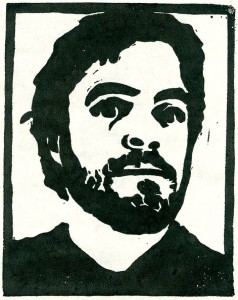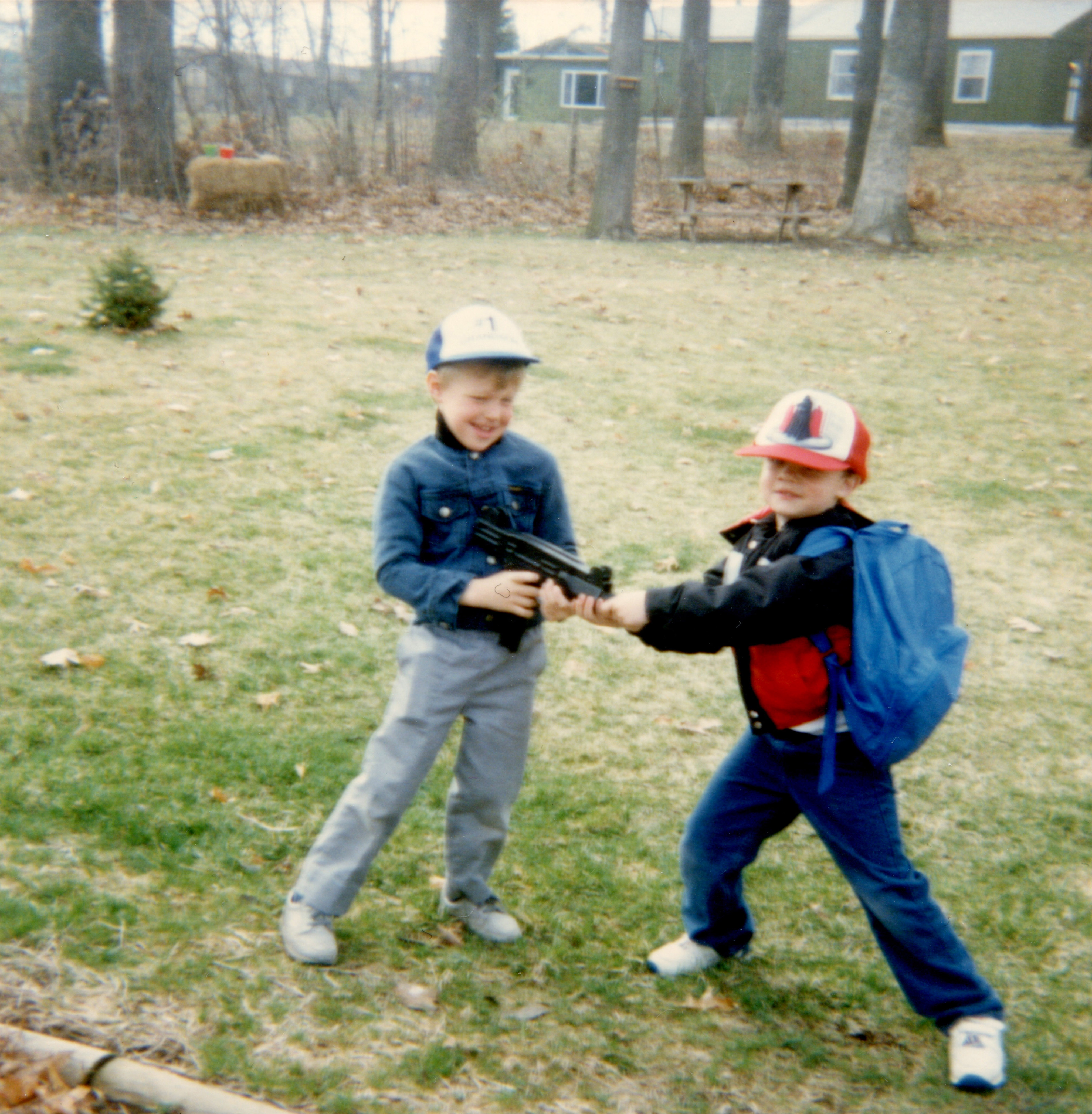 I’ve been thinking about spice. As vine, as flower. As catastrophe in the mouth. As some kind of biological confusion. The duping of the blood, the forcing of it to the tops of us. The feeling faint, the feeling amorous. The disintegration of the tongue, even though it’s all we can do to keep from kissing anything that moves. Even the Kokopelli tablecloth in our dining room. The window’s open. It’s unseasonably warm. I had too much red chile sauce on my Sonoran Hot Dog this morning.
I’ve been thinking about spice. As vine, as flower. As catastrophe in the mouth. As some kind of biological confusion. The duping of the blood, the forcing of it to the tops of us. The feeling faint, the feeling amorous. The disintegration of the tongue, even though it’s all we can do to keep from kissing anything that moves. Even the Kokopelli tablecloth in our dining room. The window’s open. It’s unseasonably warm. I had too much red chile sauce on my Sonoran Hot Dog this morning.
*
This is Arizona and the saguaros are wilting; Arizona, where the hot dog shuns the boiling, demands the comal. In this: 30 horrible jokes about how it’s a dry heat.
*
Here, in the Sonoran Hot Dog, everything assimilates: cotija cheese to onion, red chile to mayonnaise, tomatillo to tomato. This is what we tell ourselves.
*
In Hermosillo, the Yaqui Indians dance dances named after the coyote. In Phoenix, we allow even our hot dogs to hurt us.
*
There’s a hunchbacked flute player on my tablecloth, playing to my fertility. I wonder what this has to do with my longing for ketchup and mustard.
*
I’m keeping from kissing the tablecloth. From taking it into my mouth. Tablecloth as spice blotter, as shroud. As if, post-spice, the tongue is grieving. Sonoran hot dog as a blurring of borders. As both brain and heart. As American as manzana pie. As the pig graffiti’d in chili-cheese. I will say nothing of the encased, or defaced. It’s too hot to speak about the heat.
*
In Hermosillo, you can top your Sonoran Hot Dog with pineapple, with avocado, with chorizo, with poblano crema. In Arizona, you can perfume your neck with saguaro flower essence, in order to, according to Sonoran Alchemy (Let the Essence of the Desolate Uncover the Essence of You ™), “balance your masculine and feminine attributes… help in working through power struggles with parental or authority figures… and, like a true father, help us see how we can help ourselves,” while you eat your Sonoran Hot Dog.
*
I help myself to too much red chile. You blow hot air over my nape. If you blow hot air over my nape, why do I shiver?
*
The Sonoran Hot Dog as all confusions of the body.
*
The tongue as false father, the Sonoran Hot Dog as sexually confused. The saguaro is braced to praise or punish, hands on its hips, hands in the air. It calls penis, penis, penis through the window. I’m not sure if this is ridicule, or advice.
*
My mouth hurts. I want to kiss. It’s hot, and I’m in the Sonoran, and there are no yellow leaves here, nothing to remind me of ketchup, mustard, any less spicy sauce. If there were yellow leaves here, every yellow leaf but three would have fallen from the maple in the backyard. This big-ass eyelet of yellow on the lawn, the tree itself the stick jammed into the iris—precisely the shit they warned us about at recess all those years ago, back when I lived in the Midwest. Ronald Jarrell lost an eye that year. Lucio Aguilar too. Mr. Basofin, the principal, that winter banned snowball fighting. We all stood around, whistling, holding our snow. Hot dogs holding their mysteries in the casing, the chile confusing the mouth—mystery eats mystery. I can’t make sense of these things. Can’t tell how blindness informs assimilation. Can’t tell what depth perception has to do with the Sonoran Hot Dog—the eating of it from the top down. And: Open windows, yellow leaves, a little rain, spice? The maple is a cactus. The snow, red dust. And lawn?! If it rains here, we have to double up on the most surprised of our vowels. The hot dog is meant to be eaten horizontally, you tell me, but I’m not sure how you know this. But we know this: When it rains here, we call it monsoon.
*
The heat outside as authority figure, as sheriff. The heat in my mouth as my true father. Outside, the brush dances in the wind, and some wild canine tears the throat of the javelina. Moaning pigs communing with other moaning pigs. Each moving closer to the bun.
*
The brush as lit from the inside. The lovely creosote as creosote burning.
*
The Sonoran Hot Dog as stereotype made dangerous. As the sort of communion that makes us scream before accepting…
*
Hydrochlorofluorocarbons dripping from the walls like malarial perspiration, we eat our dressed-up hot dogs in the shuddering, weakening A/C. The spice beats in our temples like a machine gun.
*
In spice, a confusion of identity. How, when the sun burns us, we feel cold.
*
Here, in this kind of heat—no trees—even the hot dog needs a costume.
*
The hot dog as inappropriate chills, as trying so hard to contain its violence. As a racist sheriff in need of window-dressing. As a demand for papers. As tortured criminal, red chile sauce as his monster mask.
*
In the summer of 2005, Phoenix decided to ice its 120-degree cake with a pair of simultaneously-operating serial killers: The Baseline Killer (or Baseline Rapist, so named for his prowling of Baseline Road, who escalated his criminal activity from robbing at gunpoint a Little Caesar’s Pizzeria to murder, and who disguised himself in a Frankenstein mask, or as a homeless man, and raped his targets before shooting them in the head) and the Serial Sniper (or Serial Shooter—who later turned out to be two men, or shooters—who began blowing away dogs and horses before going randomly after human pedestrians, especially those on bicycles, a vehicle which, at the time, served as my primary mode of transportation to and from work at Arizona State University). My wife would wring her hands until I came home from talking with other nerds in a cinderblock classroom about the poetics of space. The entire city was gripped in this fist of fear, this cult of anxiety about setting foot outdoors into the be-pricked and be-bulletted heatwave, the communion with Son of Sam a pale conferva indeed.
*
The spice shooting the hot dogs from our mouths. This landscape of sand as a neat trick. Indeed.
*
Now, I can’t tell if it’s the spice that invades the hot dog, or the hot dog that invades the spice. Can’t tell creosote from algae, the plant from the meat.
*
Now, I can’t tell if it’s the spice that’s the flower/vine, or the hot dog. Which has the longer stem. In what part of us, it is planted.
*
Here, the kudzu uses other plants as its grow-base in order to invest the least amount of energy in reaching the sunlight. Here, the kudzu is known as an “invasive exotic.”
*
Here, for the light, the plants mask themselves in other plants. Here, too much light yields the burning, and the burning begins with the smoke.
*
Mascara means “mask,” or, literally, “more face.” During early carnivals, behind a mask, one could be who one wanted, do anything one wanted (from illicit sexual escapades to murder), and would not be held liable. In the mask, is the pardon.
*
The Sonoron Hot Dog is not liable for its spice.
*
Disguise means “off-style.” Costume means “custom.” These are meant to be opposites. Linguistically-speaking, we mask our costumes in disguises.
*
Something outside of our window is burning. On your breath, something so much more than the hot dog. You’re hot, and confused, so you pull the blanket around you. In this is confused theory, and a spicy mouth craves the sort of water that will not cool it down.
*
The bun as more efficient cooling tool. Your breath as inadequate to uprooting the saguaro.
*
Camouflage means “puff of smoke” or “to blow smoke in someone’s face.” No one knows where Sonora comes from. Its origins are merely theoretical. Some feel it’s the Yaqui pronunciation of señora (in response to an image of Nuestra Señora de las Angustias, or Our Lady of Anguish). Others feel it’s a Spanish mispronunciation of the Yaqui term sonot, or natural water well. Like Water to Anguish, each theory is inadequate to the other.
*
In home, in home, in home is ownership. In ownership, an assertion of dominance. Dominance sweet dominance.
*
So, we dig beneath the toppings to find a sense of home, the home being closest to the bread. The bread as tablecloth as spice blotter as the soaking of one thing into another thing. The awful stain into the purity of the napkin. This is also what we tell ourselves. The home as the familiar hot dog, the familiar as the familial, the home as the thing we, be-masked, stole for ourselves. Words like destiny and birthright confused as whether to be the blotter or the blotted, the costumes, or the disguises.
*
So, we praise, we punish, we rise like the vines:
At the Phoenix Wells Fargo, I fill out a deposit slip for $165.00. A young mother in a green neoprene kerchief (Dragonfly Salon is just around the corner) walks up the six steps from Home Mortgage into the bank lobby. She’s out of sight of the tellers, and the personal bankers, as usual, are away from their desks. She drags her daughter, seven-years-old at the most, by the sleeve of the girl’s pink windbreaker. The girl’s hood is up. It’s 114-degrees outside and the little girl’s hood is up. Tendrils of blonde hair snake from beneath it. By the way they hold their mouths, I can tell they’ve had an argument—the little girl acting up in front of the loan officer. A pink mylar foil balloon—a gecko—is tied to the girl’s right wrist with a length of scrolled green ribbon. The mother carries an obese white purse, stops at the landing. The tellers can’t see her. I sign my deposit slip and stand where I am. The mother opens her purse and removes a wooden pepper mill as long as my forearm. The little girl knows, frowns. She lifts her chin, sticks out her tongue. The mother raises the bottom of the pepper mill to the girl’s mouth, completes eight twists and the eight twists of ground pepper collect into a pile on the girl’s tongue. The girl closes her mouth, tightens her lips. Is silent. The deposit slip is getting wet in my palm. The ink is beginning to run. Mother and daughter walk to an open teller window, and the mother chats to the teller—a young man in a white shirt, red tie—about the heat. They laugh. The daughter is too short to see the teller. The teller sees the mother standing next to the gecko. The daughter’s face becomes more and more red. Her eyes close. She says nothing. Makes no sound. No cough or sneeze. Not a whimper. Her feet begin to dance on the tile as if she has to go to the bathroom. The sleeves of her windbreaker swish so quietly against the torso, as if shushing all of us. The gecko begins to shake. After four minutes, the mother yanks the daughter, still tight-lipped, by the arm. I imagine the popping sound of her shoulder dislocating, a half-dollar of bone jumping from the pink collar. The balloon failing. The pain and its wonderful release. The spitting of the pepper. The scream. They open the door to the sidewalk. Silent. The weather storms inside. Defeats the A/C. They turn the corner. I watch a lone Fry’s shopping cart push itself up the street. I’ve never been good at these things. At divining the rubric necessary to decide what they are. I have trouble distinguishing the cacti from the redwoods. I’ve been lying again. I don’t live in Arizona anymore. Now, I live in Michigan. At my neck, I can’t tell if that’s your breath, or the desert, or the snow.
 Today we are pleased to feature artist Jenny Day as our Authors Talk series contributor. In this short interview, Day talks about her five art pieces from her “Nearly Somewhere” series and “Forgotten Topographies” series featured in Issue 19. Day expands on her own artistic background, influences, goals, and the places and memories that inspired her art pieces.
Today we are pleased to feature artist Jenny Day as our Authors Talk series contributor. In this short interview, Day talks about her five art pieces from her “Nearly Somewhere” series and “Forgotten Topographies” series featured in Issue 19. Day expands on her own artistic background, influences, goals, and the places and memories that inspired her art pieces. The buffalo blocked the two-lane road. Barely six-years-old, I had no notion of the rarity of this intimate sighting. In the distance a herd of the mythic beasts gathered in clumps across the Oklahoma reservation to eat pale, ankle-high prairie grass. The car’s engine hyperventilated in a get, get, get rhythm. The open sky and expansive plains mocked us. My mother sheepishly honked the horn once or twice, but the buffalo (technically a bison) held its ground. It may have been five or fifteen minutes until she finally surrendered and cut off the engine.
The buffalo blocked the two-lane road. Barely six-years-old, I had no notion of the rarity of this intimate sighting. In the distance a herd of the mythic beasts gathered in clumps across the Oklahoma reservation to eat pale, ankle-high prairie grass. The car’s engine hyperventilated in a get, get, get rhythm. The open sky and expansive plains mocked us. My mother sheepishly honked the horn once or twice, but the buffalo (technically a bison) held its ground. It may have been five or fifteen minutes until she finally surrendered and cut off the engine.


